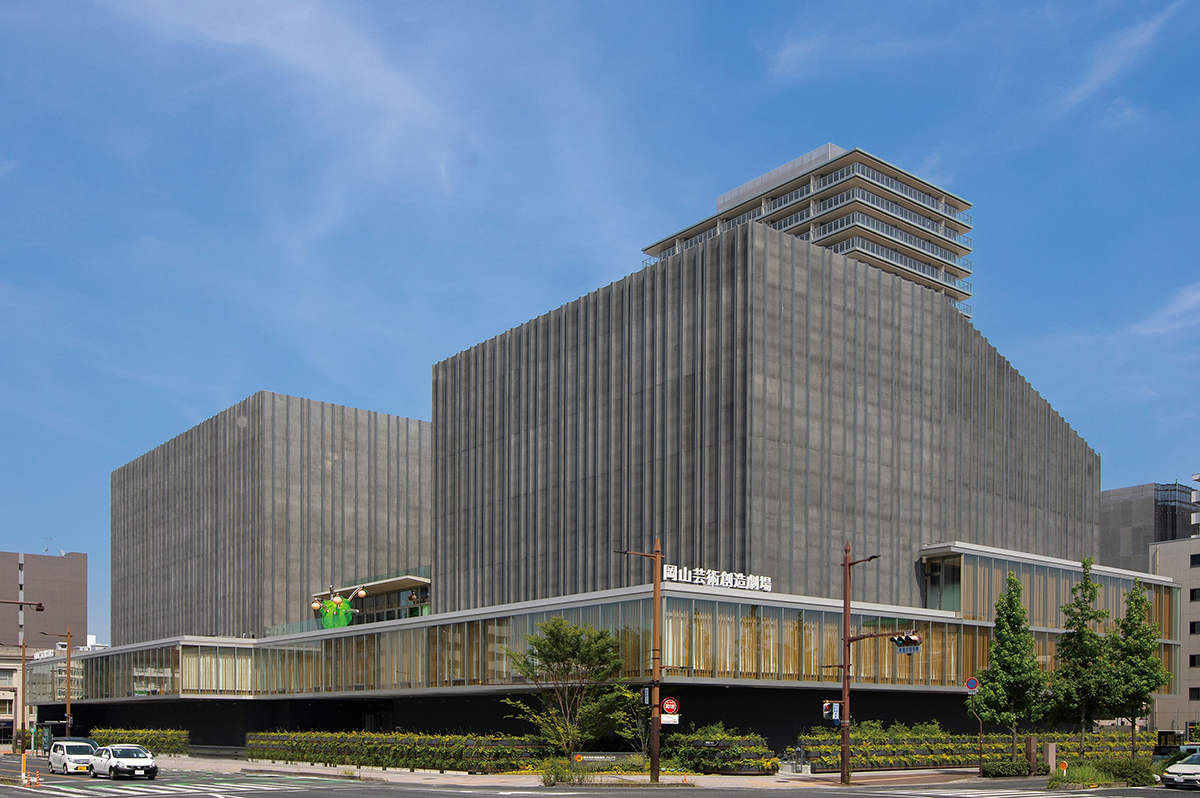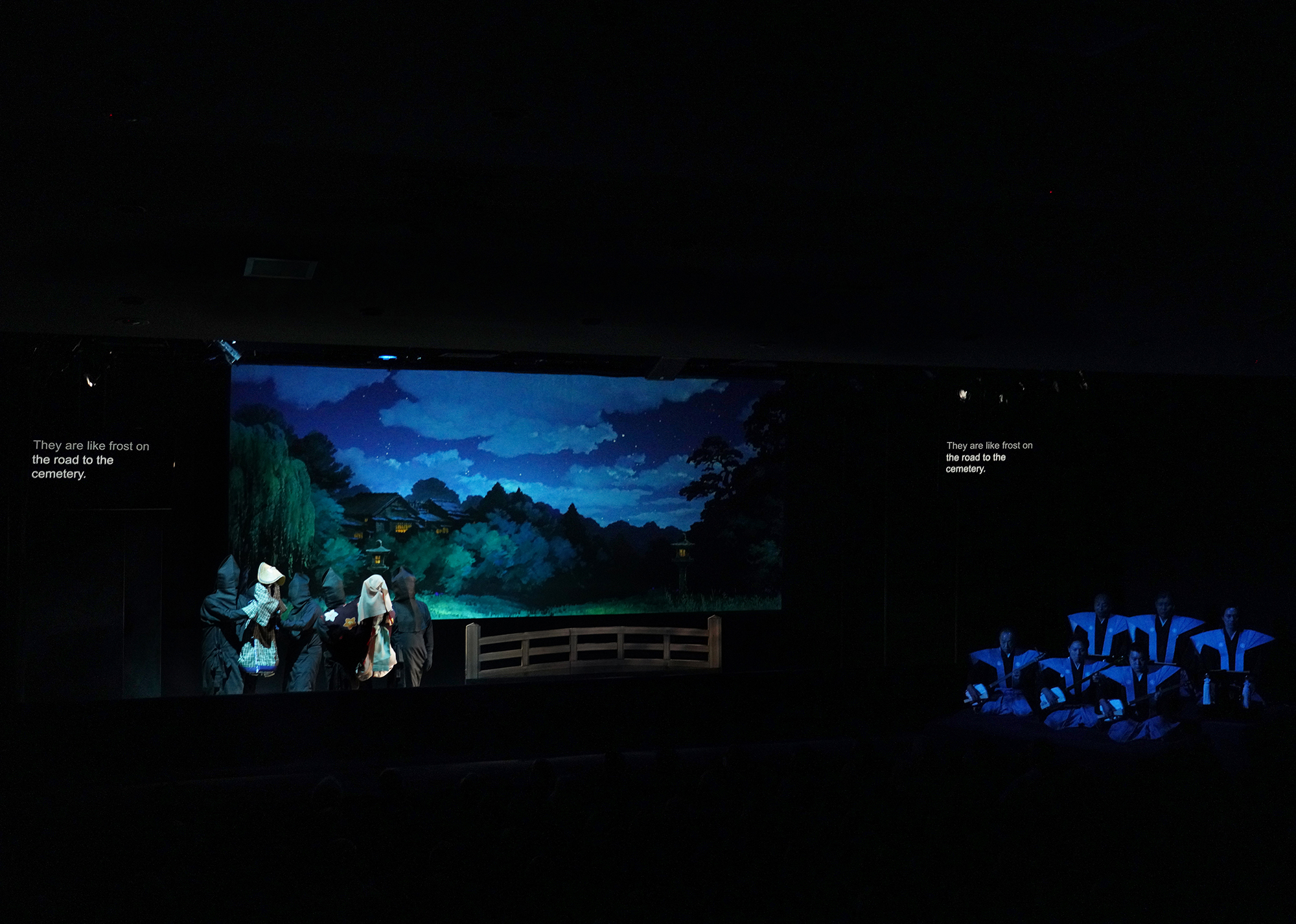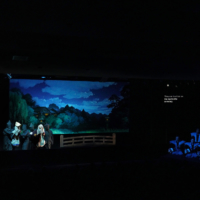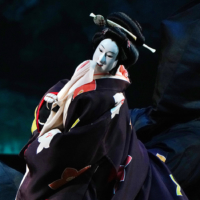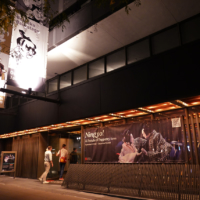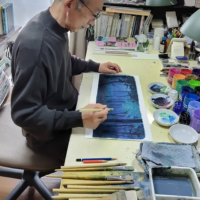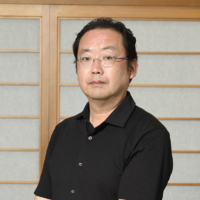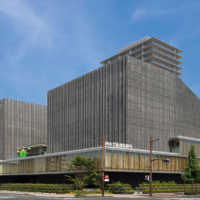Bunraku is a traditional performance art in which the narrator (tayu), shamisen player and puppeteers combine their mastery — cultivated over decades of training — to breathe life into otherwise lifeless puppets.
Formally known as Ningyo Johruri Bunraku, it originated in Osaka in the early 17th century and was designated by UNESCO in 2003 as an Intangible Cultural Heritage. The essentials have remained unchanged: three equal components — the puppeteers (ningyotsukai, usually three per puppet), the tayu and the musicians who play the traditional three-stringed shamisen. Performers devote decades to honing their craft — not for personal glory, but to create the stage that brings the puppets and stories to life.
The puppeteers dedicate themselves entirely to the puppets, while the narrators voice characters of all ages and genders. The shamisen provides the depth and range of a full orchestra. Every aspect of their skill contributes to bunraku theater, with every moment calculated to enhance the story and captivate the audience.
Each member of the bunraku team is essential; no component can perform without the others. True mastery may require decades of dedication. Practicing, studying and refining the art continues throughout the performers’ entire careers.
New challenges
Traditional Japanese performing arts are often seen by the public as long, difficult to follow and somewhat intimidating. To make bunraku more approachable and comprehensible to a broader audience, Japan’s National Theatre — a leading institution in the preservation and promotion of classical arts — has been exploring ways to streamline its productions for touring while maintaining the artistic integrity of the performances, particularly with overseas and regional audiences in mind.
To further advance this initiative, the National Theatre has looked into staging performances with more accessible storylines, shorter running times and venues beyond designated theaters, aiming to bring bunraku closer to everyday life.
Taking the lead in this initiative, the National Theatre’s executive producer Tatsuhiro Kanda produced a traditional bunraku play using innovative direction. By reimagining the classic work through a fresh artistic lens, the production aimed to lower the barriers to entry and rejuvenate this time-honored art form.
Kanda selected the final and most famous scene of the 18th century classic “The Love Suicides at Sonezaki.” Written by Chikamatsu Monzaemon and first performed in 1703, “Sonezaki” remains one of bunraku’s most hauntingly memorable plays. Set in Osaka, it is a tragic love story.
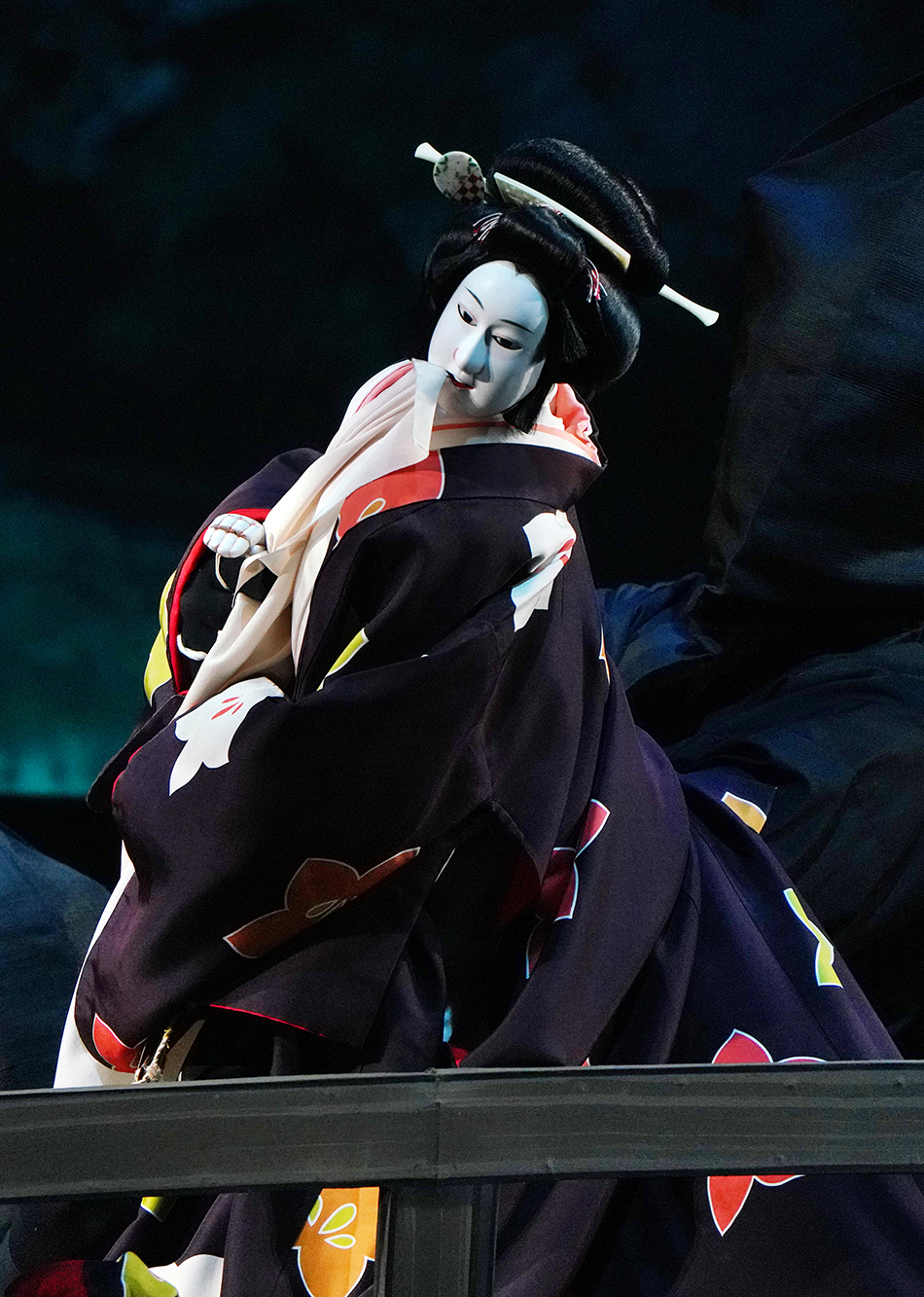
A brief recounting of the final scene of “Sonezaki” goes like this. A gentle young clerk working for a merchant in Osaka is swindled by a friend and wrongly accused of fraud. This brings him great shame and sorrow. In the meantime, he pines for his lover Ohatsu, amid circumstances that make it impossible for them to be together.
Kanda said: “I chose this title because it’s a poignant story of lovers seeking peace in the afterlife — a tale with emotional clarity that may resonate with people who are unfamiliar with Japanese culture. Though the original material is longer and the narrative more involved, the final scene is concise and simple, yet fascinating to behold.”
Furthermore, anime artist and art director Kazuo Oga was chosen for a collaborative project that takes bunraku to new realms of expression: an animated backdrop that both heightens and complements the ambience of the world and its stories.
For all its treasured history, bunraku is also flexible and experimental. The collaboration with Oga is a prime example of how bunraku has evolved over the centuries. Kanda said that simplifying the stories and downsizing the stage props have been vital factors in the continuing journey of this fascinating stage art.
Although the idea of an overseas tour had existed for some time, it began to take concrete shape in 2024 when the Japan Society invited the National Theatre to open its annual puppet season with a bunraku performance. The initiative was in line with the Japan Cultural Expo’s belief that bunraku is a particularly effective medium for communicating Japanese culture to international audiences. The Japan Cultural Expo is a government-led initiative aimed at showcasing the appeal of Japanese arts and culture through exhibitions, performances and festivals. As such, the expo decided to provide support for the project, and a U.S. tour was organized — beginning in Los Angeles and continuing on to five major cities, including New York and Washington, D.C.
They were met with standing ovations and thunderous applause. Audiences were deeply moved, including a woman who was in tears after the performance. Another person in Washington said that the story and the strains of the shamisen transported them on a spiritual journey right alongside the characters.
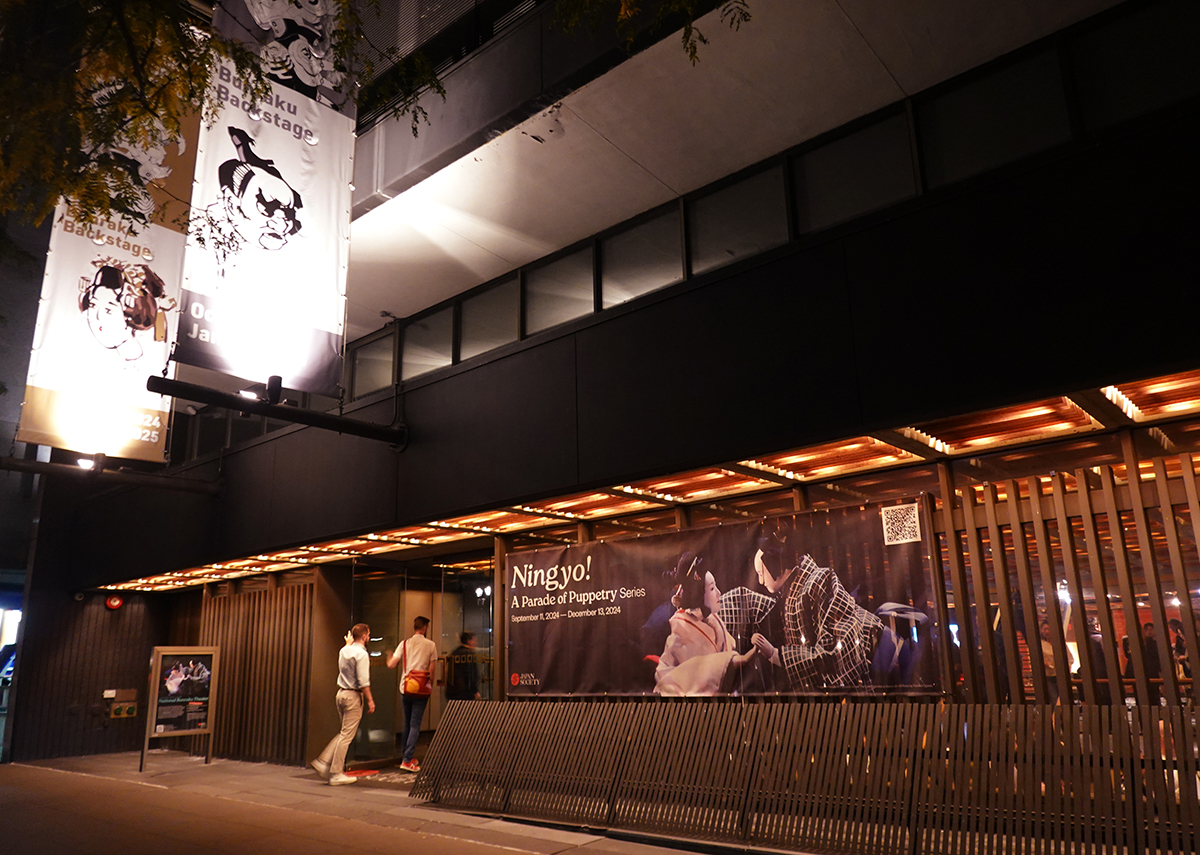
An energetic match
Kanda said the animation backdrop collaboration with Oga has revitalized bunraku without altering its essence. “Traditionally, the backdrop visuals are all handmade, which is one of the most valuable traits of bunraku theater. Logistically, however, the backdrop was difficult to dismantle and re-create with every performance in an outside venue. If touring was to become the norm rather than the exception, we had to think of an alternative plan.”
Kanda recalled watching a ballet production with a video backdrop, which inspired him to take a similar approach.
“That being said, we didn’t want a video backdrop that would dominate the production. We wanted something that would enhance and complement the performance. We even considered bringing in a Japanese painting artist. In the end, we turned to Kazuo Oga.”
Oga is famed for creating the backdrop visuals for such Studio Ghibli classics as “My Neighbor Totoro” and “Princess Mononoke.” His work is evocative and emotional yet restrained.
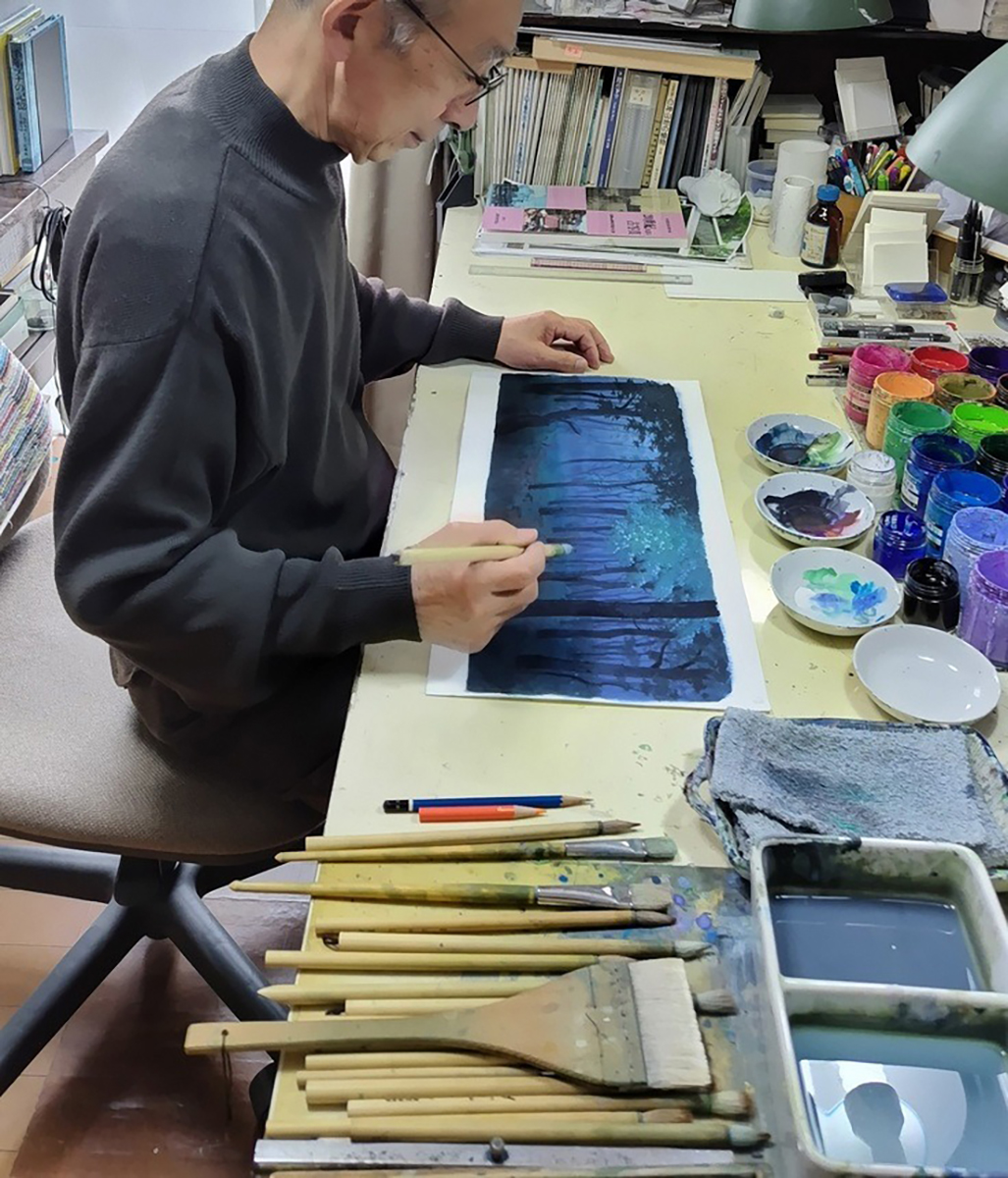
“We selected Mr. Oga for his beautifully intricate artwork and particular aesthetic,” Kanda said. “His backdrops are breathtaking but harmonious with the stage, never overshadowing the characters or story. They fit perfectly with the world of bunraku.”
Oga approached the project meticulously, studying the original material and often calling with detailed questions. “The completed paintings were scanned, then the data was sent to a production team and turned into video. From inception to completion, this was all very much a team effort,” Kanda explained.
“Most of the story takes place at night, and it was a challenge to decide how much of the sky to reveal and what to keep in shadow. For example, in the beginning the stars are hidden by clouds, but when a puppet looks up and says with tremulous ardor, ‘as I look upon the night sky,’ the clouds part and the stars emerge.”
“In the final segment of ‘Sonezaki,’ the puppets die and fade out on stage as dawn approaches. The anime backdrop refined and elevated the expression of this scene. All the movement in bunraku is traditionally horizontal, but in the anime backdrop, the sun ascends vertically. The effect is breathtaking. The performers themselves are not doing anything they wouldn’t normally do but the vertical movement, the colors and the ambience of the backdrop adds a beautiful new dimension to the performance,” Kanda said.
“‘Sonezaki’ is a play that portrays the tragic deaths of star-crossed lovers, performed with a unique beauty through puppetry. Such tragic love stories are common in bunraku, and one of its distinctive features is that, because the characters are not played by real people, the audience doesn’t experience death or bloodshed in a graphic way. Instead, they are able to focus more deeply on the emotional drama that leads the characters to their fate.”
Now, more than 300 years after its literary debut, “The Love Suicides at Sonezaki” is embarking on a new journey across Japan. On Nov. 29 and 30, it will be shown at the Okayama Performing Arts Theater, Harenowa. Kanda hopes the Harenowa shows will set a precedent for bunraku in other regional theaters. “We’re exploring the potential of locality-based productions where audiences can walk in on a whim and then sit back and enjoy the performances.”
Bunraku extends its reach
Kanda hopes the success of the U.S. tour will mark a new phase of bunraku’s global reach.
“Going forward, audiences will be treated to new and innovative ideas enacted within the confines of this classical art form. Ideally, we hope to captivate both bunraku’s core fans and those who are completely unfamiliar with this theater art form. This includes the Japanese who have never seen bunraku but are curious to try,” he said.
“We also want to reach inbound travelers who don’t understand Japanese but would love to have a traditional theater experience.”
Though bunraku is often seen as overly traditional and difficult to understand, Kanda emphasized its accessibility.
“Once you get the hang of it, you may be amazed at how much bunraku has to offer. I hope one day, foreign tourists will choose Japan as a destination just to see bunraku.”
Tatsuhiro Kanda, National Theatre executive producer
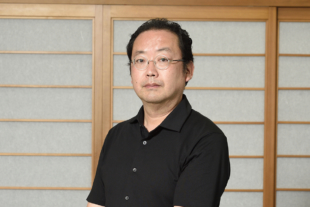
Born in Tokyo in 1972, Kanda graduated from the Department of Japanese Literature at Chuo University. He joined the Japan Arts Council in 1997 and has since been involved in the production of traditional performing arts, including bunraku, for many years.
BUNRAKU 1ST SESSION
‘The Love Suicides at Sonezaki,’ Tenjin Shrine forest scene
This special performance begins with “Bunraku 101,” a commentary session by Seiko Ito, followed by a re-enactment of the famous Tenjin Shrine forest scene from “The Love Suicides at Sonezaki.” Featuring a fusion of traditional bunraku and anime, the show includes visuals supervised by Living National Treasure Kanjuro Kiritake and created by renowned anime art director Kazuo Oga. A perfect introduction to bunraku for all audiences.
Performance schedule: Nov. 29 (Sat.) and 30 at 2 p.m. (open at 1:30 p.m.)
Venue: Okayama Performing Arts Theatre, Harenowa
Access: 7 min. by tram from Okayama Station, followed by a 5-min. walk
Information: https://okayama-pat.jp/event_info/bunraku-1st-session/
